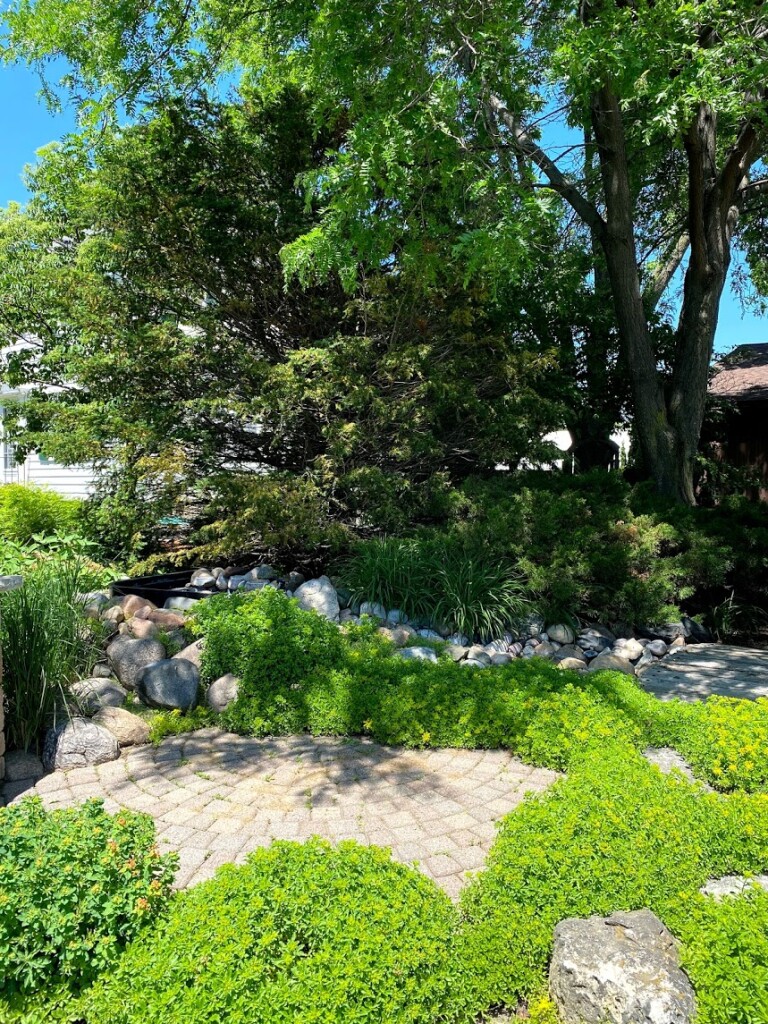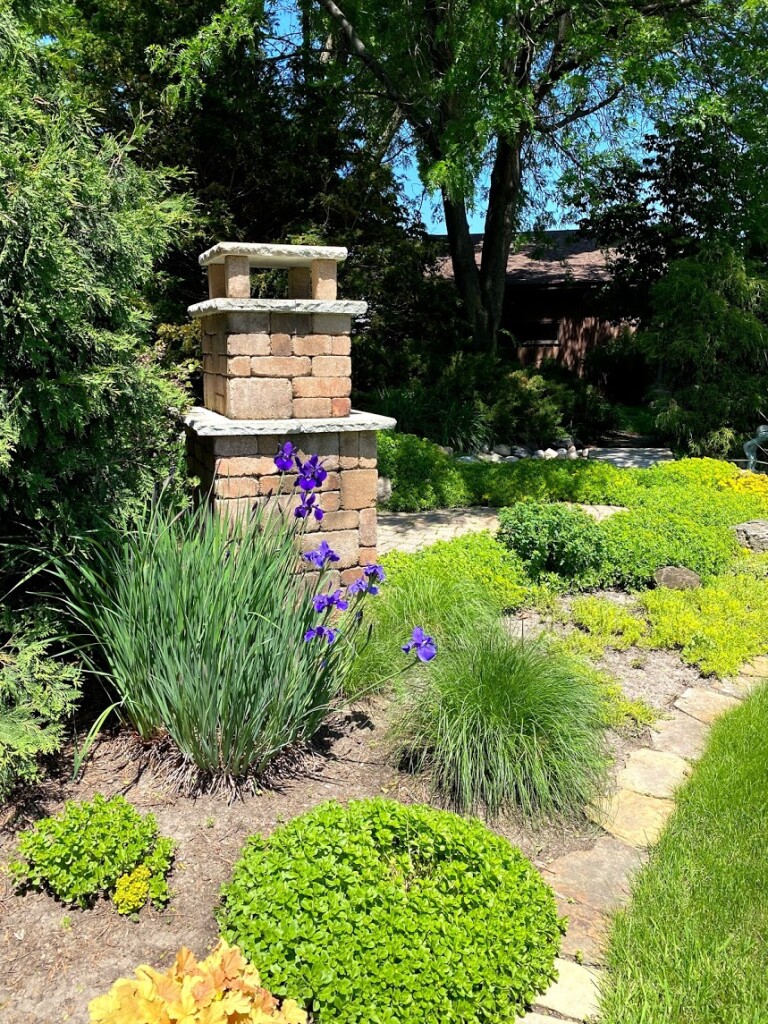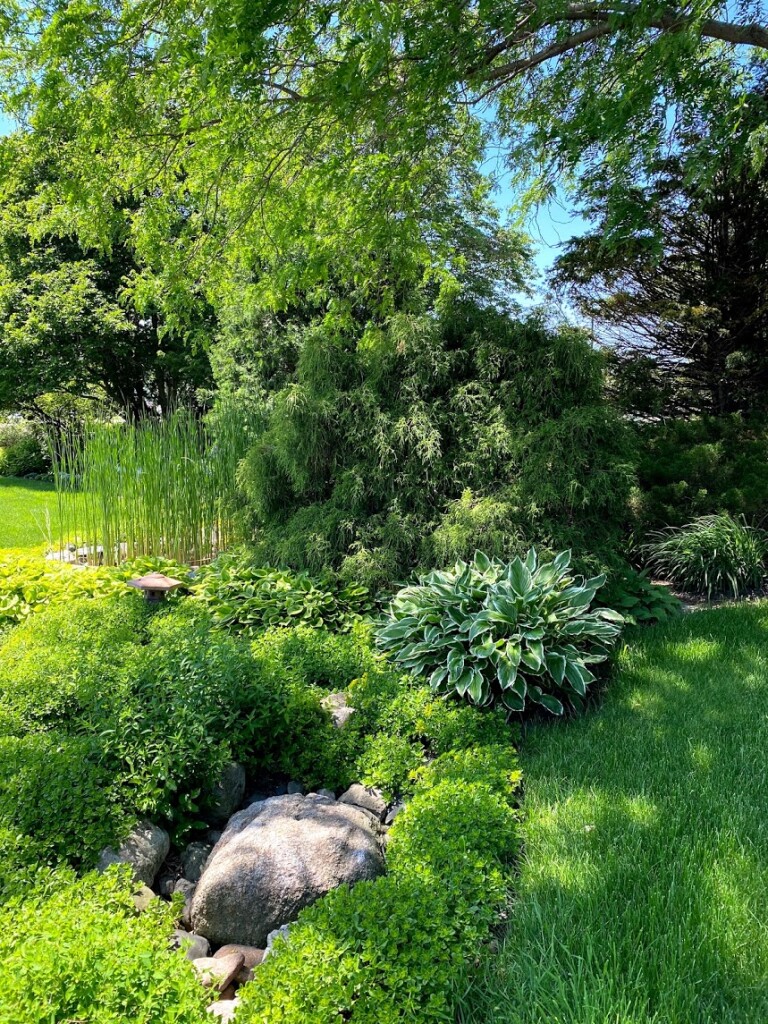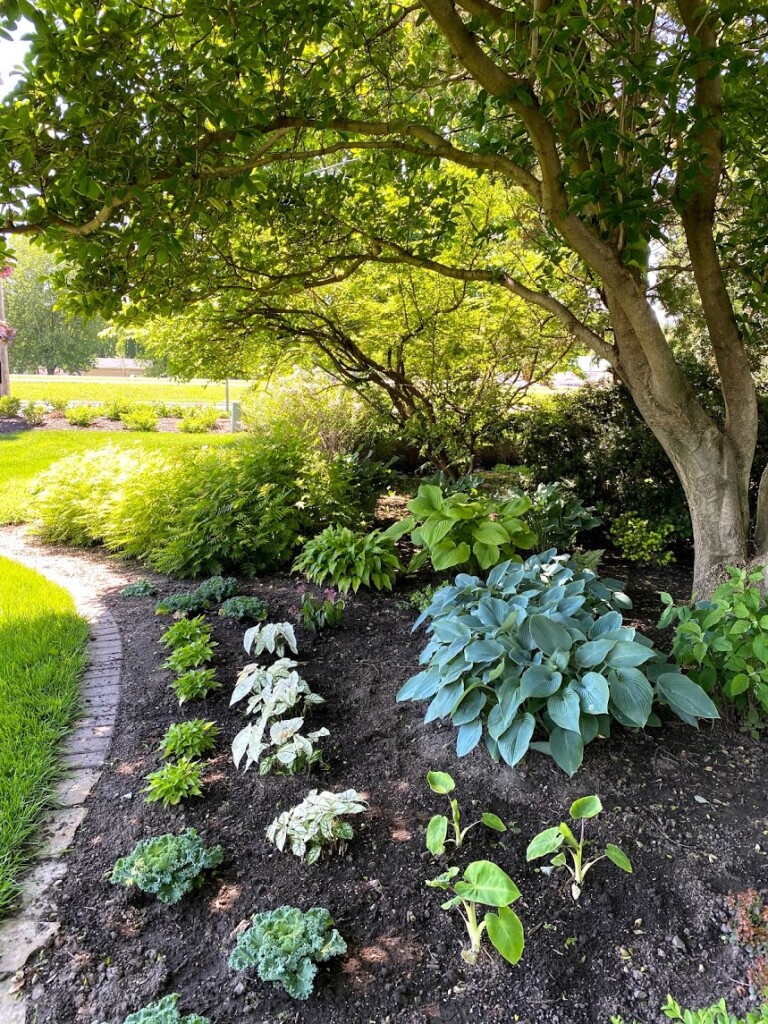Four Basic Types of Sun Exposure
Learning how to decipher the terminology on plant tags can be a challenge and translating it into choices that work for your yard can prove just as hard. When it comes to the amount of sun a plant should get there are four basic categories you will find on a label and many times plants will do well in a range of sun conditions, so experimenting with the best location for a plant may be necessary until you find the place it loves best.
Here is a brief visual using the Sargent’s House Garden Landscape as a guide!
Full Sun
Full sun can be best described as unobstructed, direct, all-day sun. The bare minimum is 6 hours per day.
A plant that needs full sun and isn’t getting it may not bear fruit, may lose it’s natural color, won’t bloom, or may bloom poorly.
Examples: Sedum, Russian Sage, Iris
Partial Sun

Plants that fall in the partial sun range need 3-6 hours of sun and are more successful with the higher end of that range.
Examples: Hyssop, Allium, Butterfly Weed
Partial Shade
Very similar to partial sun, partial shade plants need some good afternoon shade to protect them from the hot afternoon sun.
Under a canopy of high shade trees or on the East side of a building are a couple options.
Examples: Heuchera, Columbine, Baptisia
Full Shade
Full Shade doesn’t mean NO SUN…we aren’t talking about mushrooms here.
This designation just means indirect sunlight, or less than three hours of morning sun.
Examples: Hosta, Astilbe, Bleeding Hearts





